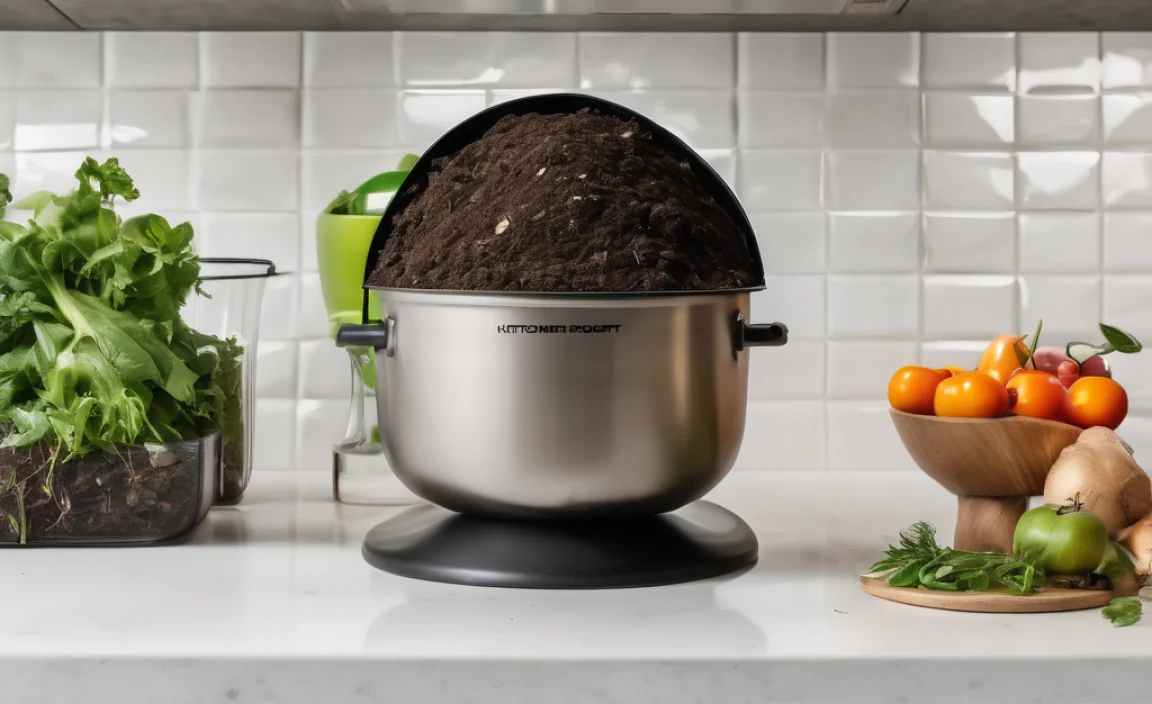Quick Summary: Falling asleep in a bathtub can be dangerous. The water temperature drops, potentially leading to hypothermia. You also risk drowning, especially if you have underlying health conditions or have consumed alcohol. Setting a timer and ensuring someone checks on you can help prevent these risks. Always prioritize safety when taking a bath!
Taking a warm bath is a great way to relax and unwind. But what happens if you get *too* relaxed and drift off to sleep? It’s more common than you might think, but it can also be risky. Don’t worry, we’ll walk you through the potential dangers and, more importantly, how to avoid them. We’ll cover everything you need to know to enjoy your bath safely, from water temperature to helpful precautions. Let’s dive in and keep those bath times relaxing and safe!
The Risks of Falling Asleep in the Bathtub

Falling asleep in the bathtub might seem harmless, but it can lead to several dangerous situations. Here’s a breakdown of the key risks:
Drowning
This is the most severe risk. If you fall asleep and your face goes underwater, you can drown quickly. This is especially true for:
- Small children
- Elderly individuals
- People with medical conditions that affect breathing
- Anyone under the influence of alcohol or drugs
Even a small amount of water in your lungs can cause serious problems. Drowning can lead to brain damage or death within minutes.
Hypothermia
As the bathwater cools, your body temperature can drop. This can lead to hypothermia, a dangerous condition where your body loses heat faster than it can produce it. Symptoms of hypothermia include:
- Shivering
- Confusion
- Slurred speech
- Drowsiness
Hypothermia can be fatal if not treated promptly. The longer you stay in cooling water, the greater the risk becomes.
Burns
Ironically, while hypothermia is a risk with cooling water, burns are a risk as you try to keep the water warm. If you fall asleep and keep adding hot water to maintain the temperature, you could accidentally scald yourself. This is especially dangerous if you have reduced sensitivity to temperature due to medical conditions or medications.
Slips and Falls
Waking up suddenly in the bathtub can disorient you. This can lead to slips and falls when you try to get out of the tub, potentially causing injuries like:
- Bruises
- Cuts
- Broken bones
- Head injuries
These injuries can be particularly serious for older adults or individuals with mobility issues.
Cardiac Issues
The sudden immersion in hot water can put stress on your heart. For individuals with pre-existing heart conditions, this can lead to:
- Irregular heartbeats (arrhythmias)
- Increased heart rate
- Increased blood pressure
These effects can be amplified if you fall asleep and remain in the hot water for an extended period.
Factors That Increase the Risk

Several factors can increase the likelihood of falling asleep in the bathtub and the severity of the consequences:
- Alcohol and Drugs: These substances can cause drowsiness and impair judgment, making you more likely to fall asleep and less aware of the dangers.
- Medications: Certain medications, such as antihistamines, sedatives, and pain relievers, can cause drowsiness as a side effect.
- Exhaustion: If you’re already tired, you’re more likely to fall asleep, especially in a warm, relaxing environment.
- Medical Conditions: Certain medical conditions, such as sleep apnea or epilepsy, can increase the risk of falling asleep unexpectedly.
- Hot Water: Hot water can make you feel relaxed and drowsy, increasing the likelihood of falling asleep.
How to Prevent Falling Asleep in the Bathtub

Fortunately, there are several steps you can take to reduce the risk of falling asleep in the bathtub:
Set a Timer
This is one of the simplest and most effective ways to prevent falling asleep. Set a timer on your phone or a kitchen timer for a reasonable amount of time (e.g., 20-30 minutes). The alarm will wake you up before the water gets too cold or you get too drowsy.
Keep the Bathroom Door Unlocked
If someone needs to check on you, an unlocked door allows them to do so easily. This is especially important if you live alone or have medical conditions that could cause you to lose consciousness.
Tell Someone You’re Taking a Bath
Let a family member, roommate, or friend know that you’re taking a bath and approximately how long you’ll be. Ask them to check on you after a certain amount of time. This provides an extra layer of safety.
Avoid Alcohol and Medications
Don’t drink alcohol or take medications that cause drowsiness before taking a bath. These substances can significantly increase your risk of falling asleep.
Keep the Water Temperature Moderate
Extremely hot water can make you feel drowsy. Keep the water temperature warm and comfortable, but not so hot that it makes you feel lightheaded or sleepy. According to the CDC, a water temperature of less than 120°F (49°C) can help prevent scalding.
Stay Hydrated
Dehydration can sometimes lead to feelings of fatigue. Make sure you’re adequately hydrated before taking a bath. Drinking a glass of water beforehand can help.
Avoid Bathing Alone When Possible
If you have a medical condition or are feeling particularly tired, consider having someone nearby while you take a bath. This way, they can assist you if you need help or notice that you’re becoming drowsy.
Use a Bath Pillow
A bath pillow can make you more comfortable, which in turn can make you more relaxed and prone to falling asleep. While comfort is great, make sure you’re not *too* comfortable. It’s a good idea to avoid using a bath pillow if you know you’re already very tired.
Keep the Bathroom Well-Ventilated
A stuffy, warm bathroom can contribute to drowsiness. Ensure the bathroom is well-ventilated by opening a window or turning on the exhaust fan. Fresh air can help keep you alert.
Consider a Shower Instead
If you’re feeling extremely tired or are at high risk of falling asleep, consider taking a shower instead of a bath. Showers are generally less relaxing and therefore less likely to induce sleep.
What to Do If You Wake Up in the Bathtub

If you wake up in the bathtub and feel disoriented, take the following steps:
- Assess Your Condition: Check for any injuries, such as burns or bumps. Try to determine how long you’ve been in the water.
- Get Out Carefully: Stand up slowly and carefully to avoid slipping. Use a towel or bath mat to provide traction.
- Dry Off and Warm Up: Dry yourself thoroughly with a towel and put on warm clothing. If you feel cold, wrap yourself in a blanket.
- Rehydrate: Drink a glass of water or warm beverage to help rehydrate and raise your body temperature.
- Seek Medical Attention If Necessary: If you experience any concerning symptoms, such as difficulty breathing, chest pain, confusion, or severe shivering, seek immediate medical attention.
Creating a Safe Bathing Environment

Beyond the immediate risks of falling asleep, creating a generally safe bathing environment is essential. Here are some tips:
- Install Grab Bars: Install grab bars in the bathtub and shower area to provide extra support and prevent falls, especially for elderly individuals or those with mobility issues.
- Use Non-Slip Mats: Place non-slip mats inside the bathtub and on the bathroom floor to reduce the risk of slipping.
- Keep Electrical Appliances Away From Water: Keep electrical appliances, such as hair dryers and radios, away from the bathtub to prevent electric shock.
- Maintain Water Heater: Regularly maintain your water heater to ensure it’s functioning properly and delivering water at a safe temperature.
- Supervise Children: Never leave young children unattended in the bathtub, even for a moment. Drowning can occur quickly and silently.
Understanding Water Temperature and Safety
Water temperature plays a crucial role in bathing safety. Here’s what you need to know:
Ideal Water Temperature
The ideal water temperature for a bath is generally between 90°F (32°C) and 105°F (41°C). This temperature range is warm enough to be relaxing but not so hot that it poses a risk of scalding.
Checking Water Temperature
Always check the water temperature with a thermometer before getting into the bathtub. If you don’t have a thermometer, test the water with your hand or elbow. The water should feel warm but not painfully hot.
Preventing Scalding
Scalding can occur quickly, especially in young children and elderly individuals. To prevent scalding:
- Set your water heater to a maximum temperature of 120°F (49°C).
- Install anti-scald devices on your faucets and showerheads.
- Supervise children closely while they’re bathing.
Here’s a table summarizing safe water temperatures for bathing:
| Water Temperature | Safety Level | Notes |
|---|---|---|
| Below 90°F (32°C) | Cool | May not be relaxing enough. |
| 90°F – 105°F (32°C – 41°C) | Ideal | Warm, relaxing, and safe for most people. |
| 105°F – 120°F (41°C – 49°C) | Caution | Can be too hot for some people, especially children and the elderly. |
| Above 120°F (49°C) | Dangerous | High risk of scalding. Avoid this temperature. |
The Importance of Hydration
Staying hydrated is important for overall health, and it can also play a role in preventing falls in the bathtub. Dehydration can lead to:
- Dizziness
- Lightheadedness
- Muscle cramps
These symptoms can increase your risk of falling, especially when you’re getting in or out of the bathtub. Make sure you’re drinking enough fluids throughout the day, and consider drinking a glass of water before taking a bath.
Recognizing Symptoms and Responding Appropriately
It’s crucial to recognize the symptoms of potential problems and respond quickly. Here’s a quick guide:
| Symptom | Possible Cause | Action |
|---|---|---|
| Shivering, confusion, drowsiness | Hypothermia | Get out of the tub, dry off, warm up, and seek medical attention if symptoms persist. |
| Red, painful skin | Scalding | Rinse the affected area with cool water for 10-20 minutes and seek medical attention. |
| Dizziness, lightheadedness | Dehydration, low blood pressure | Get out of the tub slowly, sit down, and drink water. If symptoms persist, seek medical attention. |
| Difficulty breathing, chest pain | Cardiac issues, drowning | Call emergency services immediately. |
FAQ: Safe Bathing Practices
Here are some frequently asked questions about safe bathing practices:
What is the safest water temperature for a bath?
The safest water temperature for a bath is between 90°F (32°C) and 105°F (41°C). This range is warm enough to be relaxing but not so hot that it poses a risk of scalding.
How long is too long to stay in a hot bath?
Staying in a hot bath for more than 30 minutes can increase your risk of dehydration, dizziness, and overheating. It’s best to limit your bath time to 20-30 minutes.
Is it safe to take a bath every day?
Taking a bath every day can strip your skin of its natural oils, leading to dryness and irritation. It’s generally recommended to bathe every other day or every few days, depending on your skin type and activity level.
What should I do if I feel dizzy while taking a bath?
If you feel dizzy while taking a bath, get out of the tub slowly and sit down. Drink a glass of water and wait for the dizziness to pass. If the dizziness persists or worsens, seek medical attention.
Can I use essential oils in the bath?
Yes, you can use essential oils in the bath, but it’s important to use them safely. Dilute the essential oils with a carrier oil, such as coconut oil or jojoba oil, before adding them to the bathwater. Use only a few drops of essential oil, as too much can irritate the skin.
Is it safe to use bath bombs?
Bath bombs are generally safe to use, but they can sometimes cause skin irritation or allergic reactions. Check the ingredients list and avoid bath bombs that contain harsh chemicals or fragrances. Rinse your skin thoroughly after using a bath bomb.
How can I make my bath more relaxing?
To make your bath more relaxing, try adding Epsom salts, essential oils, or bath bombs to the water. Dim the lights, play soothing music, and light candles. Make sure the bathroom is well-ventilated and the water temperature is comfortable.
Conclusion
Falling asleep in the bathtub can have serious consequences, but by taking the right precautions, you can significantly reduce the risks. Remember to set a timer, keep the bathroom door unlocked, avoid alcohol and medications, and maintain a moderate water temperature. By creating a safe bathing environment and being aware of the potential dangers, you can continue to enjoy relaxing baths without worry. Stay safe, stay informed, and enjoy your next soak!

